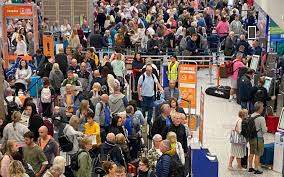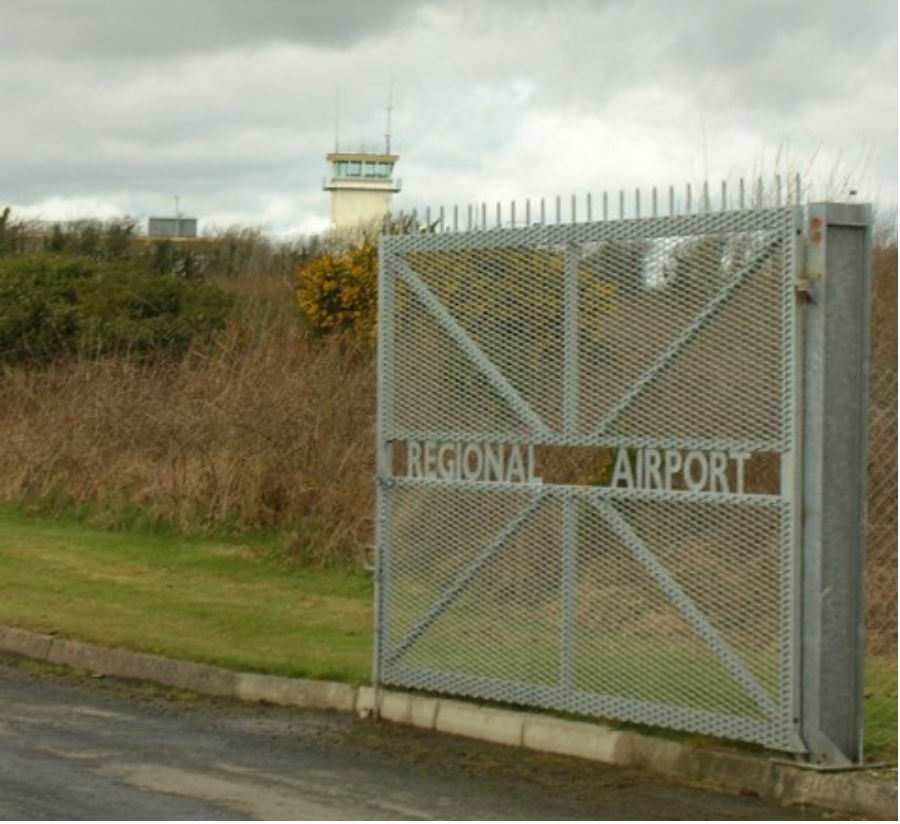Why Airline Delays Snowball
A minor incident can easily mushroom into a major airline scheduling disaster.

By Myron Nelson
Airline schedule “meltdowns” seem to be in the news of late. Whether the event is experienced broadly throughout the industry, or confined to a single carrier, one of the first questions that arises is why it is that a disruptive event, like a storm, can last just a few hours, yet it can take several days or even a week before the airline(s) involved are back to normal operations?
The issue itself is fundamental to airline operation and could fill an entire tome to address fully. I am going to try and share just a few main points garnered from decades of personal experience.
INFRASTRUCTURE
Every day up to 50,000 individual airline flights operate in the U.S. airspace system, carrying upward of 3 million passengers. Considering the vast size and scope of the network, the entire industry operates amazingly safely and efficiently.
Since the costs of equipping and staffing an airline are so high, the green shades have determined that they can only justify capital expenditure to cover normal operations plus a slight buffer. Having the equipment, staffing and facilities to cover events greater than the slight buffer is deemed to be prohibitively expensive, especially when such serious events are optimistically projected to happen only once or twice a year and meltdown events maybe once in a decade or so. When it comes to infrastructure, there is a lot of finger-crossing in the airline industry, followed by finger-pointing when the organism eventually grinds to a halt.
MACHINES
Regardless of recent concerns otherwise, modern airliners are remarkably safe and reliable with most critical systems having two or three layers of redundancy. Like any complex machine, however, they require significant routine maintenance and occasional restorative maintenance. Airliners and/or their individual components have tightly regulated service schedules that must be strictly adhered to. Those schedules are at several different levels of complexity, varying from daily inspections that can be done anywhere to major component replacements scheduled on limitations that can be by service hour, cycle (takeoff and landing), calendar duration or flight time. Every day, airlines have multiple aircraft being taken offline for scheduled service and being replaced by serviced aircraft returning to line operation. By federal regulation, airplanes that miss their required service intervals are grounded from passenger operations.
The maintenance schedule is of such importance to the operation that for most airlines, the aircraft schedule is the first operational schedule built once the market planning department decides which flights it wants to be covered. Only when the schedule for the airplanes is built is the enchilada then sent to have the flight crew schedule built and so on.
HUMAN FACTORS
Like machines, human flight crews need periodic maintenance and repairs. Furthermore, especially for cockpit crews, adequate rest is a vital issue to optimal performance. Federal authorities and crew unions have taken great strides to increase duty and flight time restrictions to ensure that crews get adequate rest.
One example of a major change just a few years ago involves maximum duty day limitations. In a nutshell, in years past if a crew’s duty day was originally scheduled to be legal, the flight crew could continue to fly that schedule even if a delay, such as an unexpected delay taxiing out, would cause the crew to exceed the duty day limitations.
Today, however, if the scheduling computer shows that a ground delay is going to cause a crew to exceed certain limitations, even by a minute or two, the crew can and will be ordered to return to the gate and get replaced with a different crew, which can cause massive schedule mayhem and passenger distress. Ironically, actions taken because of ground delays inherently cause more ground delays.
MURPHY’S LAW
Let’s take the machine and human scheduling factors described above and put them together into a real-world scenario of how minor schedule disruptions often turn into major ones and even meltdowns. All airline operations are complex, but when the system is stressed and everyone is hustling to get things back on track, misfortune often expands exponentially.
Let’s say that there is a major city served by most airlines that is also a fortress hub for a major airline and that that airport is in the first day of recovery from a very serious weather event like a 10-year winter blizzard or hurricane. A large percentage of the airplanes and crews are already not starting out where they were originally scheduled to be.
Three airplanes are at neighboring gates preparing to depart. They are full of passengers scheduled months in advance plus displaced pax from the previous day’s cancellations. They also have aboard replacement crews with clicking duty day clocks “deadheading” to outbound cities to help restore the system. Perhaps even a mechanic or two bringing special parts and tools needed to fix a broken aircraft somewhere, and jumpseats full of commuting crew members trying to get to or from work.
Just as Flight “123” on the left gets its clearance to push back from the gate, a flight attendant informs the captain that there is a lady in the aft lavatory who has collapsed and is unresponsive. The captain informs ground control, who cancels their pushback clearance and advises that they will send emergency services to the gate.
Flight “456” on the right then calls ground for pushback clearance, which they receive, along with being told to use caution for an EMT vehicle that will be passing behind them. The airplane starts to push back but the tug driver sees the emergency vehicle passing behind and stops the pushback prior to having the airplane in the proper position. The captain thinks that the pushback is complete and sets the parking brake. At the same time, the tug driver sees that the vehicle is clear and tries to resume the pushback but with the parking brake set, a safety shear pin in the tow bar snaps (as designed), leaving the tow bar useless and the airplane stranded until a replacement tow bar can be swapped out.
While all this was happening, flight “678” in the middle starts to push back from its gate. By company operating procedure, there are supposed to be two wing-walkers in position for every pushback, but the ramp crew is short-staffed this morning and the other wing-walker is helping a crew unload bags at a fourth gate and won’t be available for several minutes. The driver elects to push back with just one wing-walker positioned to his left where the emergency vehicle is parked.
Distracted and concerned by the lights of the emergency vehicle, the tug driver adds one extra turn on the steering wheel to give more clearance to his left but, with a sickening screech, drives his tail into the winglet of the mispositioned aircraft to his right, causing serious damage to an airframe part that isn’t stocked at the airport. Both airplanes are now grounded for an extended period and can’t be moved until authorities arrive and decide what to do next. Separating them incorrectly can cause additional damage.
The frantic ground controller in the tower is now using his binoculars to see that the two entangled airplanes are now blocking a major taxiway between concourses and also, by their corner/intersection position, blocking access to an “alleyway” between two concourses, hence rendering their dozen or so active gates unusable for both inbounds and outbounds.
Meanwhile, the tower controllers have several aircraft on or near final approach. They continue to receive them but scramble with ground control to figure out where to park them when they land. They know they can’t receive any more so they advise approach control to start putting perimeter aircraft into holding patterns.
As the ATC Central Command Center gets into the loop, they start issuing ground stops for all aircraft all over the world scheduled to depart for the stricken airport and speed restrictions and holding patterns for enroute aircraft until further notice. They also start advising the dispatch centers for all airlines servicing the airport about the expected delays.
Airline dispatchers start notifying crews enroute to the airport via ACARS (computer to cockpit texts) of their calculations of how long they can hold before they need to divert to alternate airports to refuel as they simultaneously try and figure out which alternate airports have gates and ramp space available to handle an influx of unexpected aircraft. Diversions to alternates will cause several of the affected crews to time out, while several other crews who are supposed to be working are sitting idle in airports and hotels. Delays cascade upon delays.
Across HQ halls, the crew scheduling departments of all the affected airlines start crunching the numbers on staffing scenarios to rebuild schedules that can’t logically be built yet since they don’t know how many flights will remain in the schedule and how many will eventually get canceled. They start staffing for best-guess scenarios even though they know from experience that things are going to change, perhaps several times. Some “stormchaser” crew members eager to make serious premium pay from mayhem jump in and volunteer, but other ones (few but impactful) who are sick and tired of getting their schedules reassigned start turning off their phones. Passengers stranded in the terminal and on parked planes start calling reservation centers trying to schedule flights on schedules that the agents know are likely to change anyway. This books up available seats, making future callers give up in futility for flights that will inevitably depart with empty seats, even as the Red Cross is asked to bring blankets and cots to the airport as area hotels book out at elevated rates.
At some point somebody figures out that there are aircraft sitting at gates waiting for replacement crew members, and those crew members happen to be sitting in airplanes out on the ramp waiting for a gate to become available and both cases involve the same gate.
Along with all the other departments, those tasked with scheduling aircraft for maintenance are scrambling to revise their schedules to get the airplanes where they have to be before they turn into pumpkins and require expensive remote maintenance or even ferrying around empty. Right when more aircraft are needed for recovery, fewer aircraft will be available and crews and passengers start getting much-hated aircraft “swaps” throughout the system that weren’t originally scheduled to happen.
When the dust finally settles, as it always does, an errant turn of a tug steering wheel by one of the least paid but most vital employees in the system will have caused schedule issues for many thousands of passengers and crew members and millions of dollars of additional costs and delays. The effects of cascading complications often portend that day two of a recovery will go worse than day one.
As the investigation begins, authorities want to debrief the tug driver, but all they find is his ID badge and locker key on the break-room table because, as is often the case, a job at one of the airport fast-food places pays more than a ramp job. His mandatory double shift for the next day goes uncovered.
This is just one event at one airport. Systemwide, irregular operations happen with regularity and tend to build upon each other. The airline world often adopts military acronyms for situations like this and SNAFU is a popular one. Meanwhile, the National Weather Service announces a hazardous weather advisory …






